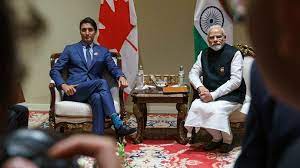A young patient catches the first polio case after nearly ten years, suffers paralysis but is no longer contagious.
The United States has announced its first incidence of polio in nearly ten years.
On Thursday, health officials in the state of New York’s revealed that a young kid had tested positive for the ailment.
The case was discovered in a resident of Rockland County, which is located approximately 48 kilometers (30 miles) north of Manhattan, the state’s health department reported on Thursday.
The sickness has paralyzed the unidentified patient in Rockland County, despite the fact that they are allegedly no longer contagious.
Authorities claim that the unvaccinated person was probably exposed to someone who had received a vaccination that contained a live but weakened virus.
According to federal health experts, the last instance of this dangerously contagious occurred in 2013, when a 7-month-old baby who had recently immigrated to the US from India was diagnosed in San Antonio, Texas.
The testing reports claim that the highly contagious viral case probably originated outside of the US.
“We are monitoring the situation closely and working with the New York State Department of Health and the Centers for Disease Control and Prevention to respond to this emergent public health issue to protect the health and wellbeing of county residents,” said Patricia Schnabel Ruppert, a Rockland County Health Commissioner.
Despite the fact that the person is no longer considered contagious, researchers are still trying to determine how the sickness started and whether anyone else was exposed. Officials advised the region’s unvaccinated people to get the injection, and they cautioned medical professionals to look out for any additional cases.
“Most Americans are vaccinated against polio, but the new case should serve as a wake-up call to the unvaccinated,” said Jennifer Nuzzo, a Brown University pandemic researcher.
With annual outbreaks resulting in thousands of paralysis cases, polio was previously one of the country’s most feared diseases. The virus, which primarily affects youngsters, causes sore throats, respiratory infections, exhaustion, and nausea, according to the CDC.
The disease, which was formerly widely feared across the nation, was nearly eradicated thanks to a widespread immunisation effort that began in 1955.
Annual cases dropped sharply from over 100 in the 1960s to less than 10 in the 1970s; by 1979, the US was declared polio-free. Since then, people from abroad have occasionally brought polio into the country.
Polio vaccinations come in two different varieties. The US and many other nations utilise vaccines created with a virus that has been rendered inactive. However, other nations where polio has become more of a problem recently utilise a weak live virus that is administered to kids as drops in the mouth. A virus’s ability to transform into a form that can start new epidemics after becoming weaker is extremely rare.
In America, a three- or four-dose series of immunizations is frequently given starting at two months of age. Officials from the federal government recommend four routine dosages between the ages of two and four months, four and six, and between the ages of six and eighteen months.
Only three dosages are necessary for some states. Approximately 93% of toddlers have received at least three doses of the polio vaccine, according to immunisation data from the US Centers for Disease Control and Prevention.
The majority of Americans have had polio vaccinations, but those who have not may still be at risk.
Polio is common in Afghanistan and Pakistan, but recent studies suggest that it has now spread to other parts of the world.
After finding the virus in samples of London sewage last month, health officials in the UK issued a warning to parents asking them to immunise their kids.













